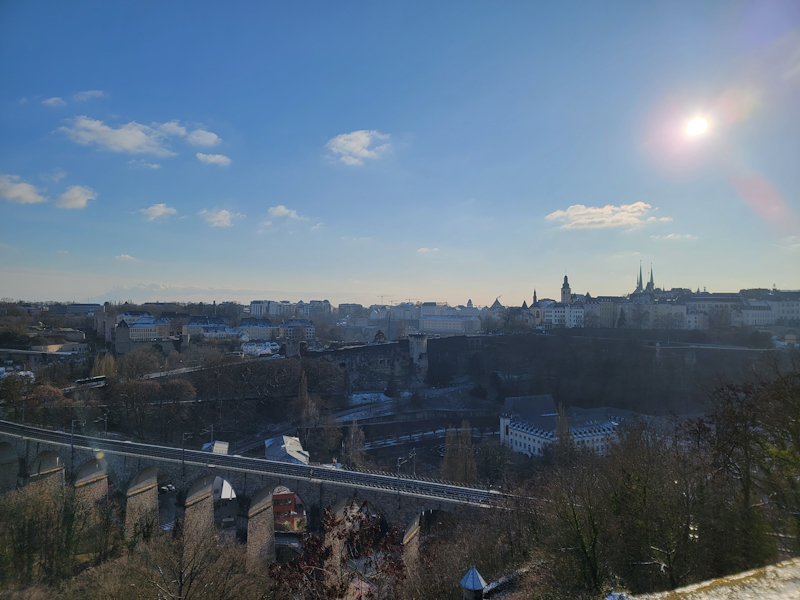The Samsung Galaxy S21 Ultra & S21 Review: The Near Perfect and The Different
by Andrei Frumusanu on February 22, 2021 12:00 PM EST- Posted in
- Smartphones
- Samsung
- Mobile
- Galaxy S21
- Galaxy S21 Ultra
Camera - Zoom Far Beyond
The new Galaxy S21 series have again very different camera setups between the regular variants, and the new Ultra variants. On the normal S21, we’re seeing the same camera configuration as on the last generation S20 series, a 12MP 1.8µm pixel f/1.8 main camera, a secondary wide-angle lens with 64MP 0.8µm pixels and f/2.0 optics that also allows you for high quality digital zooming, and finally a 12MP 1.4µm pixel f/2.2 ultra-wide-angle lens that’s also found in the Ultra models.
The Ultra models this year has changed more significantly. The 108MP main sensor with 0.8µm pixels that bin down to 2.4µm equivalent pixels in 12MP mode on paper looks the same as its predecessor, but is actually a new model that is advertised to feature new dual-conversion gain as well as varying conversion gain capability within one frame readout for better HDR captures. The optics are still f/1.8 with OIS here.
In terms of zoom lenses, we’ve seen much differentiation compared to last year. The 4x optical module from the S20 Ultra has been replaced by a 10x optical module, however the sensor resolution has been reduced from 48MP down to 10MP. The aperture is a very dark f/4.9, and of course has OIS which is needed at these focal lengths.
To narrow the gap in focal length between the 24mm equivalent main camera and the 240mm equivalent periscope telephoto module, we see the introduction of a fourth new camera module with 3x optical magnification (72mm equivalent), with a 10MP sensor and f/2.4 aperture. This is a traditional optics stack module.
For today’s comparison, I included both new Snapdragon and Exynos S21 Ultras to investigate any possible differences in processing between the two models, as well as a slew of other competing phones, including the new Mi 11 which we’ll review soon. Due to the extreme focal length of the new S21 Ultra telephotos I added in reference shots using a 50-230mm alongside the usual 18-55 shots on my Fujifilm X-T30; the shots here should serve as reference for colour reproduction and possible dynamic range of a proper camera, alongside the smartphone shots.
We’ll first focus on the telephoto photos in this page, looking at the main and wide-angle more closely in the next page’s results.

[ S21U(S) ] [ S21U(E) ]
[ S21(E) ] [ S20+(E) ]
[ Note20U(S) ] [ iPhone 12 Pro ]
[ Mate40 Pro ] [ Mi 11 ]
[ Mi 10 Pro ] [ Pixel 5 ]
[ X-T30 ( )( ) ]
Starting with the first shot, what’s immediately noticeable at the longer focal lengths is that there’s only very few phones which are able to do better than the S21 Ultra. Having a 10x optical telephoto at 240mm is well beyond other contemporary phones, and in this regard, it does seem to pay off for Samsung to invest in this massive camera module in terms of internal space.
The Snapdragon and Exynos shots are a bit different here, and I do prefer the brighter and more accurate exposure of the Exynos, although the picture is grainier.
At the 3x telephoto level, the S21 Ultra’s new module pays off in terms of bridging the quality gap, however for some reason I’m not too blown away here, particularly if you compare it to the 3x digital zoom of the Galaxy S21 and S20’s 64MP secondary module.
What’s really disappointing for me is to see Samsung’s 2x level is still horrible – it’s simply just a digital zoom of the 1x 12MP main camera capture, whereas other hi-res main camera module vendors such as Huawei or Xiaomi are using crops out of the 52/108MP modes which much superior quality.

[ S21U(S) ] [ S21U(E) ]
[ S21(E) ] [ S20+(E) ]
[ Note20U(S) ] [ iPhone 12 Pro ]
[ Mate40 Pro ] [ Mi 11 ]
[ Mi 10 Pro ] [ Pixel 5 ]
[ X-T30 ( )( ) ]
Continuing on with a zoom of the clock face here, the S21 Ultra remains pretty much unrivalled in terms of sheer resolving power and detail.
There are still quite obvious differences in processing between the Snapdragon and Exynos, and I prefer the latter’s more natural retention of detail as I feel the Snapdragon at these zoom levels feels like overly too artificial in detail.
The 3x results are also much in favour of the Exynos, though this highly depends on the areas we’re looking as it seems Samsung is employing extensive image stacking depending on the area of the image, with some sections being notably sharper or blurrier than others. It’s still very weird that even at what’s supposed to be the sensor’s native resolution, it generally doesn’t seem that it’s actually native in the result, with the S21’s 64MP module not being that far behind.

[ S21U(S) ] [ S21U(E) ]
[ S21(E) ] [ S20+(E) ]
[ Note20U(S) ] [ iPhone 12 Pro ]
[ Mate40 Pro ] [ Mi 11 ]
[ Mi 10 Pro ] [ Pixel 5 ]
[ X-T30 ( )( ) ]
In this scene, beyond again showcasing the far reach of the S21 Ultra, we’re again seeing very different processing between the two chipset variants, with this time around the Snapdragon unit showcasing a more natural look with more details.

[ S21U(S) ] [ S21U(E) ]
[ S21(E) ] [ S20+(E) ]
[ Note20U(S) ] [ iPhone 12 Pro ]
[ Mate40 Pro ] [ Mi 11 ]
[ Mi 10 Pro ] [ Pixel 5 ]
[ X-T30 ( )( ) ]
Samsung’s segmented multi-frame processing is also extremely visible here – the Exynos has better details in the highlights, although very noisy, and blurry shadows, but the Snapdragon has better shadows, albeit blurry highlights.

[ S21U(S) ] [ S21U(E) ]
[ S21(E) ] [ S20+(E) ]
[ Note20U(S) ] [ iPhone 12 Pro ]
[ Mate40 Pro ] [ Mi 11 ]
[ Mi 10 Pro ] [ Pixel 5 ]
[ X-T30 ( )( ) ]
In a more demanding high dynamic range shot as here, the S21 Ultras didn’t do well when zooming out to the horizon, both underexposing too much with far too fast shutter speeds.
This was a generally tough scenario for all the phones involved so they really didn’t do well at all in terms of exposures and dynamic range.
Overall Telephoto Experience
In terms of far-reaching focal lengths, the new Galaxy S21 Ultra is pretty much unrivalled in the market right now. We’ve seen attempts from other vendors in deploying such optical designs at this magnification, but those were usually combined with tiny sensors, or bad optical performances. The S21 Ultra’s strength is in the optical design of the new periscope module – although it’s only f/4.9, and that can show in some scenarios, it has extremely good optical characteristics in terms of sharpness and general lack of haze, which was previously a problem in the first generation of these kind of modules.
Samsung’s problem I think still lies more in the intermediary zoom levels. 2x zoom is still abhorrent in the way that it’s just a digital magnification of the 1x main sensor output at 12MP, and we yet again see the regular S21 outperform the Ultra at this focal length frame, which is kind of embarrassing.
The 3x telephoto module helps bridge the gap, but it’s still a very large gap to the switch to 10x and the dedicated module. It’s best to avoid anything beyond 5x and 10x as it just looks bad. Samsung here is employing sensor fusion between the 3x and 10x module in small segmented patches, and much like the sensor fusion on the S20 Ultra, it still looks terrible in this implementation as it’s just inconsistent.
I wish Samsung would finally have a more solid solution for these intermediate levels of magnification, the regular Galaxy S21 just offers a significantly better quality and more streamlined experience in this regard, much like the S20 outperformed the S20 Ultra last year. The company should take notes from Huawei and how they use their high-resolution sensor in different binning modes to solve this.










122 Comments
View All Comments
eastcoast_pete - Tuesday, February 23, 2021 - link
While I haven't used it on an S20/21 or Ultra, maybe the Open Camera app will give you more control over the camera selection and exposure?Andrei, I know you (have to) test any Smartphone's camera with the manufacturer's own software, but I often wonder if Open Camera or a similar 3rd party software isn't better at using a given device's hardware capabilities? Might be worth an article down the road.
Sharma_Ji - Tuesday, February 23, 2021 - link
Obviously notAndrei Frumusanu - Tuesday, February 23, 2021 - link
You can do that, minimal focus distance is about 20cm, but the quality really isn't great.Kangal - Wednesday, February 24, 2021 - link
" I think what Samsung should do in the future is create four models of the S series, three being the same as the current line-up but renaming the Ultra to Ultra+ ”...urgh, no thanks!
Why can't we drop those monikers, don't have different variants, drop all these storage options, have only flagships, clean up the lineup like: Samsung 22-S, Samsung 22-M, Samsung 22-L, Samsung 22-XL.
Sharma_Ji - Tuesday, February 23, 2021 - link
It might be true for an actual camera, but you can go much closer and nearer to subject if you use ultrawide on a smartphone camera compared to telephoto.FunBunny2 - Wednesday, February 24, 2021 - link
"or the flowers are trampled"not to mention distorted into a guppy's mouth.
CrazyElf - Monday, February 22, 2021 - link
I really like the direction Samsung is taking with updates too. 4 years of security and 3 years of Android updates.https://www.samsungmobilepress.com/pressreleases/s...
I feel like overall, although the devices have some flaws (no SD Card, IR Blaster, and MST are the big ones), the S21 Ultra represents as step in the right direction.
The 100x zoom is still a gimmick, but the 3x and 10x cameras are decent. I bought the 512 GB and so far it's been pretty good. With these updates, I'd be more willing to consider Samsung over the competition, unless of course they step up their game.
Psyside - Monday, February 22, 2021 - link
1. The 100 x is not gimmick, but it should not be used for photos, but to orient into into the enviorment or to locate very distant objects.2. The larest feb 15+ updates made the zoom and the overall quality of the zoom shots much better
3. The 10x zoom shotsof exynos version in this review are cropped main/3x sensor shots,not f/4.9
sonny73n - Tuesday, February 23, 2021 - link
Who cares about BS "security" updates. All you'll get is more spywares from the ad company and your government.Tunnah - Monday, February 22, 2021 - link
Got a double paragraph:The camera island on the S21 is brilliant in its design. Much like on the S21 Ultra, this is an aluminium cover that protects individual recessed glass elements for the three main camera modules. Samsung harmonised the camera design between the S21 and S21+ by dropping the ToF sensor from the latter in comparison to the S20+ - which is fine by me as frankly I never really used it even though it was my daily driver for the past year.